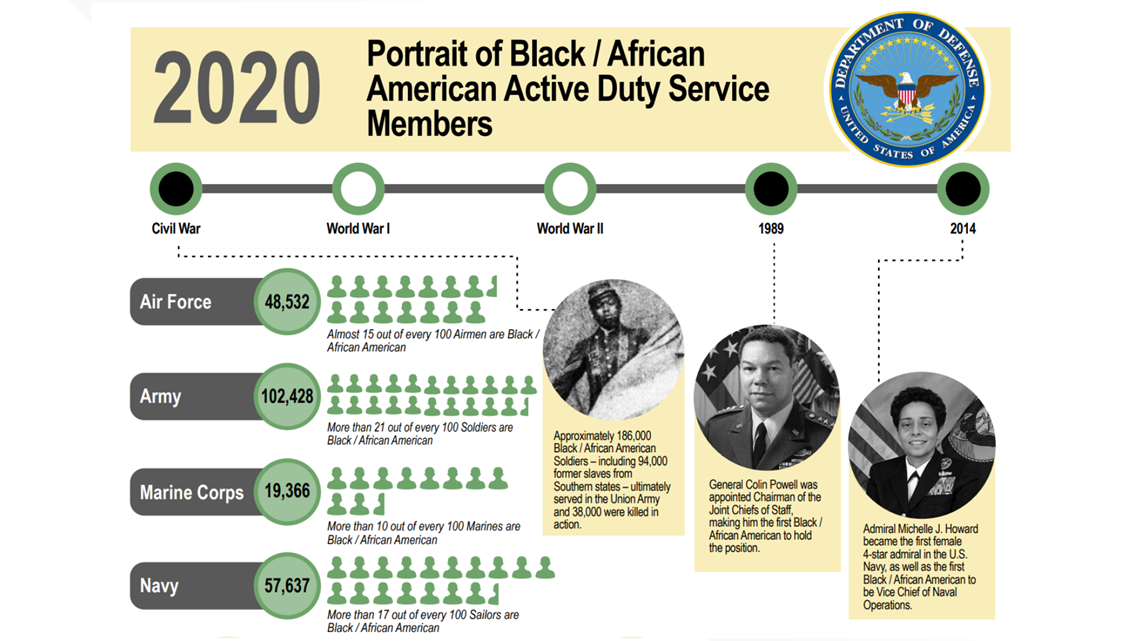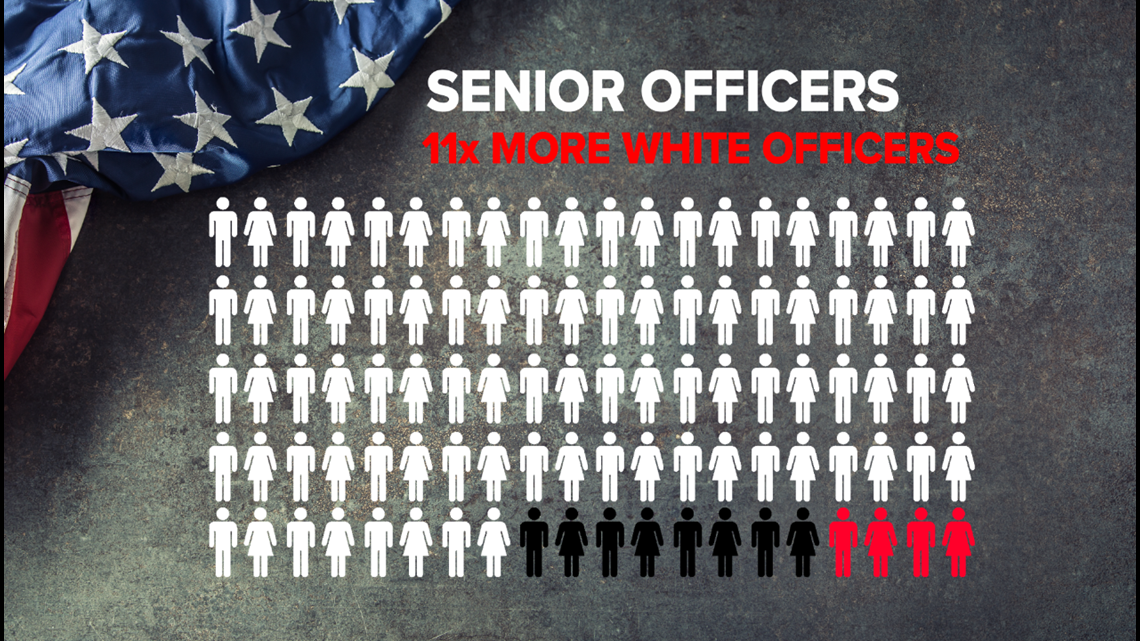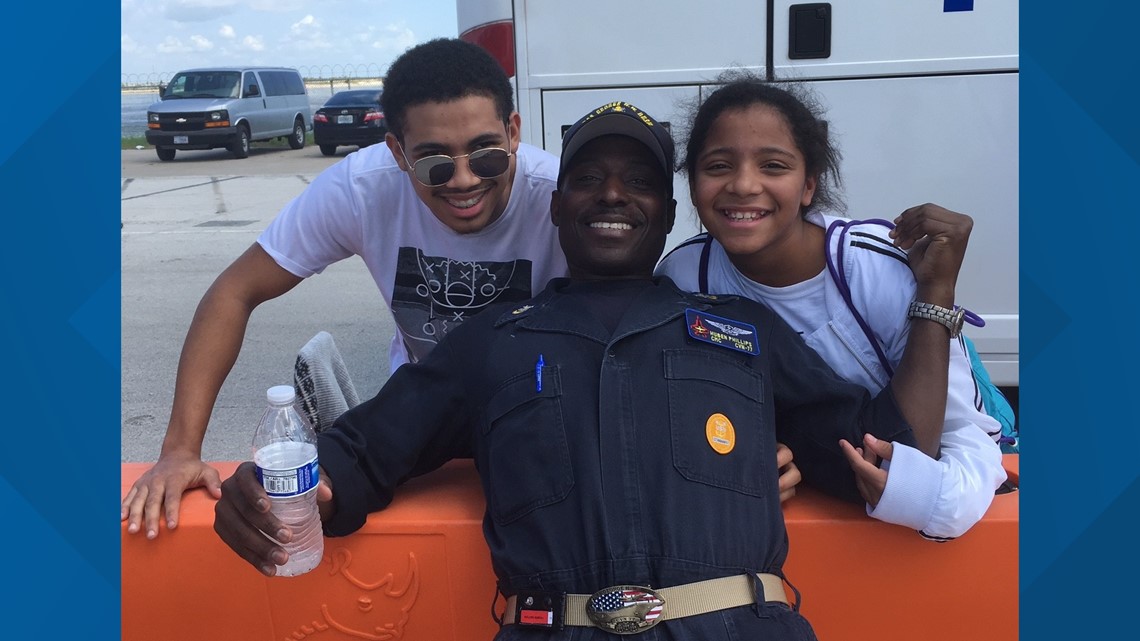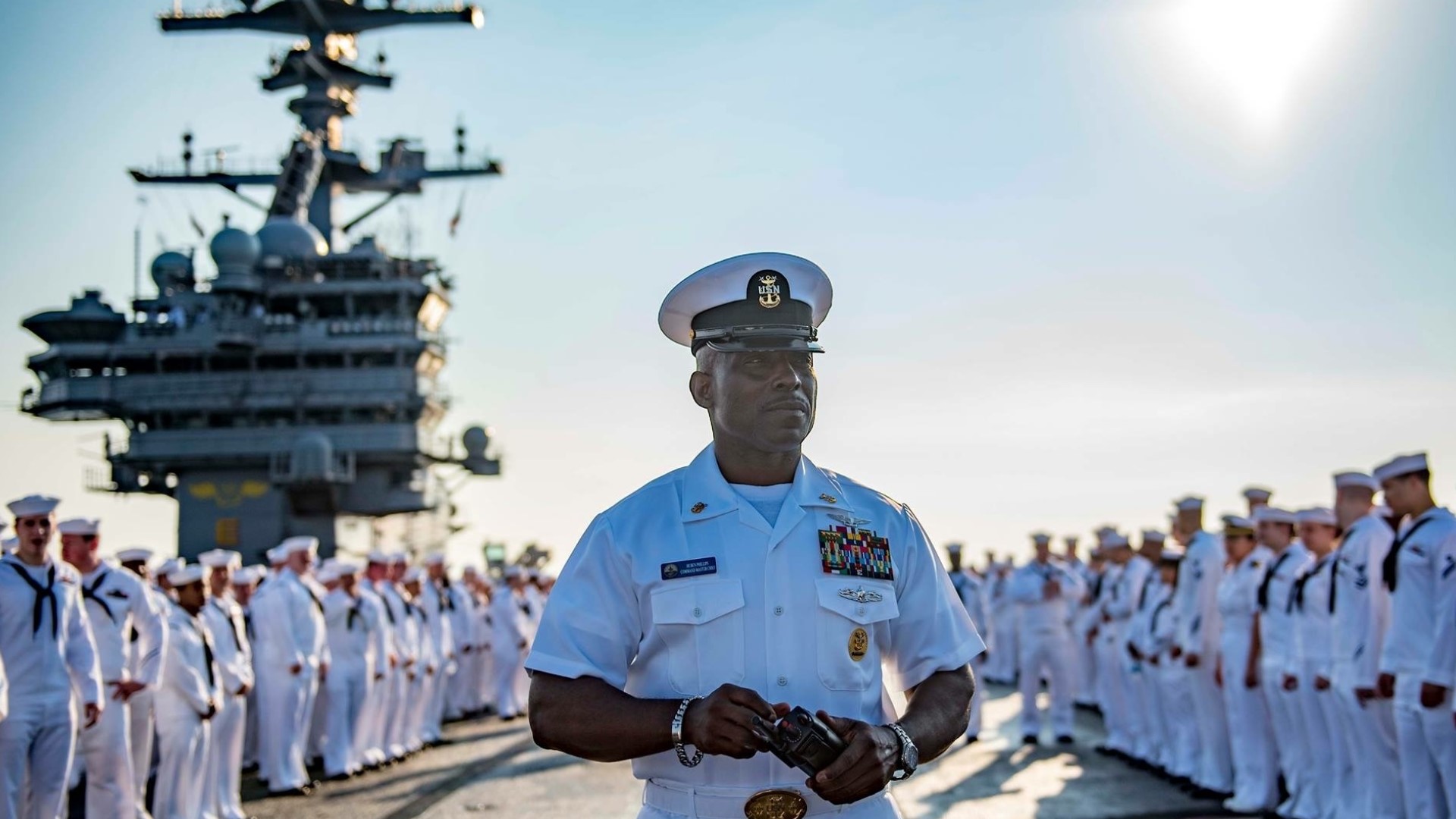WASHINGTON — Force Master Chief Huben Phillips is the senior enlisted member of a Navy task force designed to root out bias and racial barriers. Still, as a Black man, he knows he has to think twice about every word he says on the subject.
“When I walk into that room, I have to be mentally prepared,” Hubens said of his work with Task Force One Navy. “When I'm crafting that email I have to be mentally prepared and read it thirty times to ensure that there's nothing wrong with that. I don't want anyone to judge me based off that email because I may not look like them.”
The numbers back up Hubens' concern. According to the Department of Defense, there are no branches of the U.S. military that are even a quarter Black.


And as a service member rises in rank, those numbers decline even further.
“At the pay grade and pay scale that I’m at, I’m often the only one in the room who looks like me,” a black senior enlisted advisor in the Navy told WUSA9.
And though Phillips has risen to become just one of 16 force master chiefs in the Navy, he says race has often put obstacles in his way.
“As much as I've excelled in the Navy, I've also overcome hurdles,” Phillips said. “I have personally experienced barriers.”


Phillips says that, as much as the military is set apart from society, it is also a microcosm of it.
“Let's be clear, we are a reflection of society,” he said. “And, I know that most of our civilian constituents say, 'Well, you're in the military so you should live under a different code.' Yes, we do, but we recruit from society.”
Even the chairman of the Joint Chiefs of Staff says there's work to do.
“Equality and opportunity are matters of military readiness, not just political correctness,” Gen. Mark Milley told Congress.
After the death of George Floyd, Secretary of Defense Mark T. Esper created a permanent group to focus on diversity and inclusion. He also ordered photos to be removed from selection boards, which are the way the military decides who gets promoted. The goal is to take race out of the equation when making these decisions. That's because the data shows things are even worse when it comes to diversity in higher ranks.
According to the Congressional Research Service, across all branches of the military, on average 63 out of every 100 senior enlisted service members are white. Only 19 out of every 100 senior enlisted service members are Black.
The difference is even greater when it comes to senior officers. Almost 88 out of 100 are white, while only 8 out of 100 are Black. That's 11 times more white officers in the military


“We are not perfect,” Milley said. “We must thoughtfully examine our institution and ensure it is a place where all Americans see themselves represented and have equal opportunity to succeed, especially in leadership positions.”
That gap can lead to bigger problems, according to the nonprofit Protect Our Defenders. Retired Air Force Colonel Don Christensen explained it can impact the military justice system. The organization examined ten years of data and found more racial disparities.
“It was disappointing that it was so widespread, so consistent, so persistent,” he said.
A report from the Government Accountability Office agrees.
“For example, in three military services, Black service members were about twice as likely as White service members to be tried in general and special courts-martial,” the congressional watchdog wrote in a report.
Christensen, who also served as a military lawyer, thinks the armed forces needs to diversify at the officer level to combat these trends.
READ MORE: Hearing on racial disparities in military justice system
“People in the officer corps often don't understand the life experience a Black soldier or airman may bring into the service,” he said. “They might not be as understanding of any challenges that person has acclimating to the military.”
Right now, the path to change continues with conversations at the leadership level and the unit level. The chief master sergeant of the Air Force, who is only the second black man in history to be that branch's top enlisted leader, believes this will be tough.
“It doesn't matter if you're black or white, and it's incumbent upon all of us, certainly those of us in leadership positions, to create a space where people can feel comfortable talk about it,” Air Force Chief Master Sergeant Kaleth O. Wright said.
On Task Force One Navy, Phillips thinks they have to look at recruiting.
“We have to get people who look like me and people who look like other minorities back into our communities and talking about 'Hey, this is what the Navy can offer you,'” he said. “If we don't increase our base, we're never going to reach that level of diversity and inclusion we need to have.”


He is optimistic about his picture of the end result:
“A Navy that my kids who are 20, 21, 13 and 14 say, 'Hey dad, I want to go in the Navy' and I say, 'You're damn right you do' because I know it is that premiere organization for inclusion and diversity,” he said.

